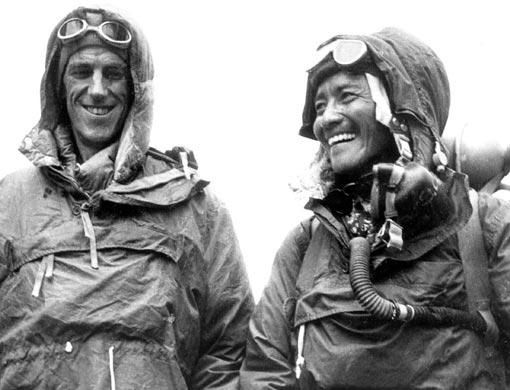Today is Everest Day, a tribute to the conquest of the highest point on earth by Sir Edmund Hillary and Sherpa Tenzing Norgay in 1953.
Every year, many take on the challenge of climbing the foreboding icy rock faces of Everest despite the deathly peril it presents. Currently, there are around 150 frozen corpses on Everest's slopes.
Ali Bushnaq attempted to climb Everest as part of a peace project in 2006. A bad case of illness struck the Palestinian, who has lived in the UAE for 40 years, with symptoms similar to pneumonia or bronchitis.
Bushnaq had spent two years training for the climb. While this hasn't put him off attempting the feat again, he's philosophical about the challenge.
"The people who have climbed Everest and succeeded said it's quite a normal thing, not too much of a special feeling. My group can take pride in being the highest people on earth at 7am on May 18, 2006. But it's not worth it if you have to lose a limb or part of the body. One in 15 will die attempting it, and one in 10 suffers injury. One member of our team lost all the fingers on his right hand; he was only 24 years old."
Extreme adventure
Bushnaq says the challenge the mountain presents is more extreme than the North Pole or, say, the deepest cave.
"There are three factors against you on Everest: the temperature, altitude - called the 'death zone' - and wind speed. It's the hardest thing to do on this earth," he says.
The team spent a total of 45-50 days on the mountain, which included a lot of time to acclimatise to the altitude (8,848 metres) and waiting for the "weather window", a period when the wind speed is markedly slower and conditions are better for climbing.
There is only a short period of time each year when it is possible to climb Everest - May 25 to June 5 - because during this time wind speeds are lower and hot air currents are pushed in from other weather systems.
Although Bushnaq didn't actually reach the summit of Mount Everest, he doesn't feel defeated by the fact.
"I really wasn't doing it to break a record. It was part of a peace project and we had achieved our goals. I did feel defeated for a while," he said.
"I'd trained for two years and spent a lot of money on the project. Many things made me feel like I'd failed, but now I don't regret it. If I had lost a limb, I would not have been able to pursue a career as an engineer, and I have a family.
"I climbed with Apa Sherpa who has made the Everest summit 18 times. He said to me: 'Ali, the mountain is always there'.
"If age permits, because now I'm 46, I'd love to do it again, when the opportunity comes round and the time is right."
Ultimate challenge: 3,000 conquests
- Nepal celebrates Mount Everest Day today.On May 29, 1953, Sir Edmund Hillary and Sherpa Tenzing Norgay conquered the world's highest peak for the first time.
- Since Hillary and Sherpa Tenzing reached the roof of the world 55 years ago, the 8,848-metre peak has been conquered at least 3,000 times. Sir Edmund died on January 11 this year.
- Mount Everest was named after Sir George Everest, the surveyor-general of India who was the first to produce detailed maps of the Indian subcontinent including the Himalayas.
American scales peak for 10th time
Meanwhile, an American climber has scaled Mount Everest for the 10th time, becoming the first non-Nepalese to achieve the feat, officials in Nepal said on Wednesday.
David Hahn, of Taos, New Mexico, reached the summit on Tuesday along with fellow American climber Nicole Messner and two Sherpa guides, said Tourism Ministry official Ramesh Chetri.
Pasang Tshering, Hahn's contact person in Kathmandu, said Hahn and his teammates were all safe and in good health and were slowly making their way down to base camp yesterday. They are expected back from the mountain early next week.













